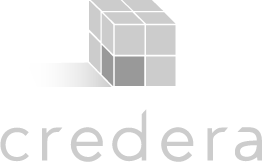By Kaitlin Pennington, Education Policy Analyst at the Center for American Progress
Over the past several years, the connection between teaching quality and student achievement has been a much-discussed topic among education policymakers and practitioners—and for good reason. Research conclusively shows that quality teaching matters to student learning. In fact, it has been identified as the most important school-based factor in student achievement.
But until recently, what quality teaching looks like wasn’t at the forefront of the debate in education. Now, however, many state departments of education and local school districts across the U.S. are developing and restructuring teacher evaluation systems, with the goal of cracking the code of teacher instructional practices that lead to student achievement, and then holding teachers accountable for performing those practices. This is a difficult task that often prompts debate, but one worth pursing for the sake of student learning and the integrity of the teaching profession.
Colorado was at the forefront of teacher evaluation reform with the passage of SB 10-191, the Educator Effectiveness bill. As part of SB 10-191, through a collaborative effort involving diverse stakeholders across the state, leaders developed a State Framework for Teacher Evaluation unique to Colorado. Through this framework, education leaders in Colorado created a tangible idea of what quality teaching looks like regardless of where a teacher works in the state.
According to the Colorado framework, 50 percent of a teacher’s evaluation is determined by professional practice and the other 50 percent by student growth. If the Colorado framework for teacher evaluation lives up to its design, a teacher’s daily practices rating on the evaluation observation rubric will align with student learning data. So, if a teacher’s daily practice rates high on the rubric, that teacher’s students will show increases in learning and vice versa. Therefore, the contents of the observation rubric are important to educators, and have the added bonus of being a useful guide for families when talking with students’ principals and teachers.
However, like most teacher evaluation observation rubrics, Colorado’s is long and quite detailed. I scanned it and summarized traits that I noticed across all of the standards into the three key teacher behaviors that I discuss below. This is by no means a complete list of effective teacher behaviors, but it can serve as a starting point for observing and talking with teachers:
Analyze Student Learning
Expert teachers have a clear understanding of their students’ strengths and weaknesses. They can speak at length about their students’ abilities and can support their claims with student work and data. These teachers are intentional about how they assess student learning and then use student assessment results to inform their instruction. Analyzing student learning is a part of high-quality instructional practice, which allows teachers to know what each of their students understand or misunderstand after each lesson. To have a conversation about student learning with a teacher, a parent or family member may ask the teacher to discuss a topic or concept the student understands particularly well or poorly. Ask the teacher to show student work or assessment results that connect to that topic. If it is something the student is struggling with, ask the teacher how she or he is working with the student to clarify misconceptions and how that instructional practice can continue at home.
Differentiate Instruction
Differentiating instruction is an extension of analyzing student data. After effective teachers analyze student data at the end of each lesson or unit, they then use the data to differentiate their instruction in order to ensure that all students are learning. A clear sign (though not the only sign) that a teacher is differentiating instruction is the use of student grouping. Teachers may put a group of students together who are not understanding a specific topic so that she can work with them one-on-one while another group of students who understood the topic move onto a project that applies it to real-life scenarios. When implemented correctly, this method allows for student misconceptions to be addressed while not boring other students who have already mastered the topic. Student grouping should not be used to teach some students less, but rather to give more time and attention to students who are struggling with a particular topic before moving onto the next lesson.
Clearly Communicate Academic Goals to Students and Families
Effective teachers create a roadmap for the academic year. They then break that roadmap up into weekly or monthly units and then, lastly, into daily lesson objectives. In addition to creating the plans, teachers relay those plans to their students and their students’ families so that they can be key players in their education, not simply compliant observers. If a teacher is proficient in communicating academic goals, students should have a clear understanding of their individual goals and a plan on how to achieve those goals. This communication allows students to take control of their learning and ask for help if/when they are not meeting their goals.
The shifts in teacher instructional practices expected due to new evaluation systems—and other concurrent reforms such as the Common Core State Standards—are just beginning and will take some time to fully implement. As the adjustment in the system takes place, asking teachers questions about their practice can help family members better understand students’ academic goals.
Kaitlin Pennington is an Education Policy Analyst at the Center for American Progress. Previously, Kaitlin worked at Colorado Succeeds and in the office of Senator Mike Johnston. As a Teach for America corps member, Kaitlin taught middle school English and language arts in Washington, D.C.
 |
| 


